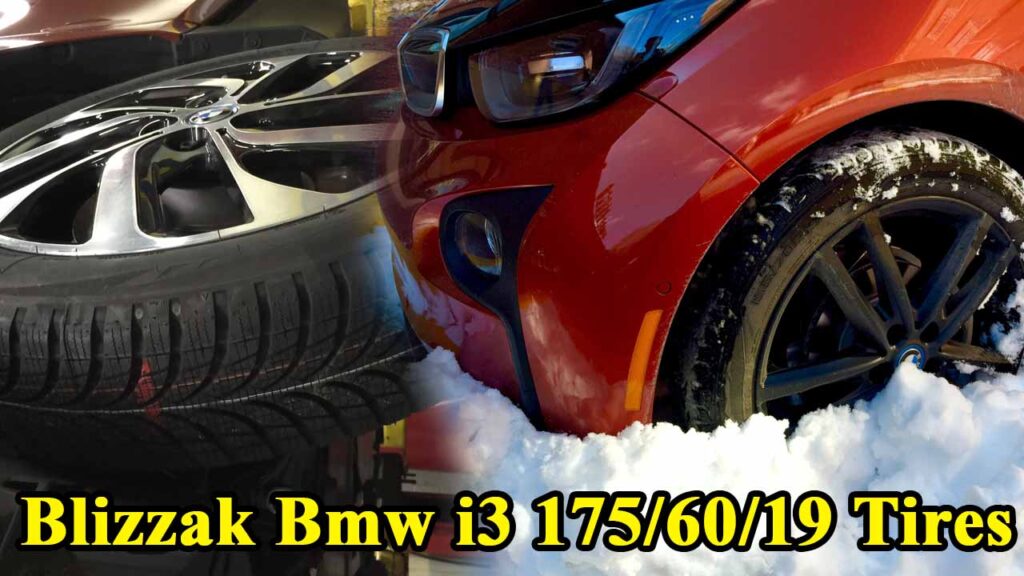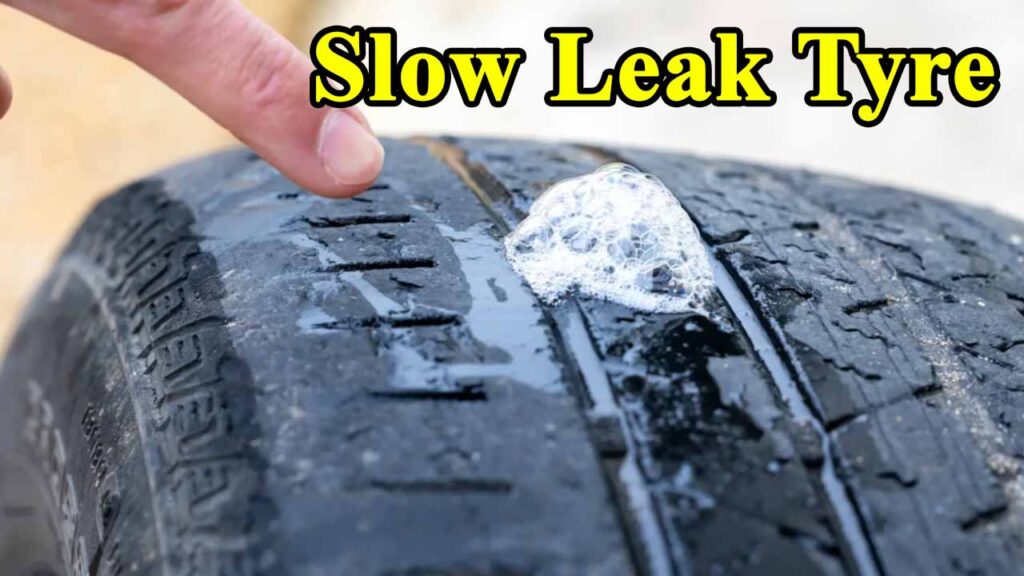The BMW i3 isn’t just another electric car; it’s a statement. With its innovative carbon fiber reinforced plastic (CFRP) construction, quirky styling, and a rear-wheel-drive (RWD) powertrain that delivers instant torque, it’s a city car designed for efficiency and agile urban maneuvering. But what happens when the snow flies and the temperatures plummet? Can this lightweight, futuristic EV truly tackle the challenges of winter? The answer, unequivocally, lies in one critical component: its tires, and specifically, for many i3 owners, the Bridgestone Blizzak 175/60/19.
As someone who’s spent more than a few winters navigating icy roads and slushy streets, I can tell you firsthand that the right set of tires transforms a vehicle. And for a car as unique as the i3, that transformation is even more profound. Let’s delve deep into why the Blizzak 175/60/19 tire, in particular, is a game-changer for your BMW i3 when winter calls.
The BMW i3: A Winter Wonderland Contender (or Challenge?)
Before we talk tires, let’s appreciate the i3’s distinctive characteristics that influence winter performance. Its relatively narrow tires are designed for efficiency, minimizing rolling resistance to maximize range. The RWD layout, while providing excellent handling in dry conditions, can be a handful on slippery surfaces without the proper grip. And then there’s the instantaneous torque of an electric motor – great for quick acceleration, but it demands precise traction to avoid wheelspin on ice or snow.
Many i3 owners, especially those living in regions with true winters (think the snowy stretches of Upstate New York, the frigid plains of Minnesota, or even just the surprisingly slick hills of a New England town after a freezing rain), know that the OEM all-season or summer tires simply aren’t enough. I recall one particularly dicey December morning in Syracuse, watching an i3 with standard tires struggle to get up a slight incline dusted with fresh snow. It was clear then: a dedicated winter tire isn’t a luxury for the i3; it’s a necessity for safety and peace of mind.
How Long Can You Drive With A Spare Tyre
Enter the Blizzak: A Winter Warrior for Your i3
Bridgestone’s Blizzak line has long been synonymous with winter performance, and for good reason. They are engineered from the ground up to tackle cold weather, ice, and snow, often employing specialized rubber compounds and tread designs that remain flexible in freezing temperatures.
The Bridgestone Blizzak Lineage: Built for Grip
At the heart of Blizzak’s success is their innovative Multi-Cell compound technology. This specialized rubber features microscopic “bite particles” and hydrophilic (water-loving) properties that literally absorb the thin film of water that forms on ice, allowing the tire to “grip” the surface. Combined with aggressive tread patterns and high-density siping (tiny cuts in the tread blocks), Blizzak tires provide an exceptional number of biting edges for enhanced traction.
Focusing on the 175/60/19: The i3’s Specific Fit
The BMW i3, especially models like the i3 REx (Range Extender), often uses a staggered tire setup, with narrower tires in the front and wider in the rear. The 175/60/19 size is a common choice, particularly for the front, but sometimes also used as a square winter setup for certain i3 variants. It’s crucial to consult your i3’s owner’s manual or a reputable tire specialist to confirm the correct sizes for your specific model and year. The i3’s tire dimensions are unique, and deviating from them can impact not only performance but also the car’s intricate traction and stability control systems.
Blizzak LM-500: The OEM Connection
Interestingly, the Bridgestone Blizzak LM-500 was specifically developed for electric vehicles like the BMW i3 and i8. This tire highlights a crucial aspect of winter tires for EVs: maintaining efficiency. While providing excellent cold-weather traction, the LM-500 is engineered with low rolling resistance in mind. This is a significant factor for EV owners, as winter conditions and aggressive tires can lead to noticeable range reduction. The LM-500 aims to strike that delicate balance between grip and maintaining your i3’s driving range.
Blizzak WS90: The All-Around Performer
While the LM-500 has its OEM connection, the Blizzak WS90 is a popular choice for many who prioritize maximum snow and ice performance. The WS90 builds on the Blizzak legacy with an improved tread compound and pattern, offering enhanced grip, shorter braking distances on slippery surfaces, and even better longevity than its predecessors. Reviews frequently praise its confidence-inspiring performance in truly adverse conditions. I’ve personally heard from local mechanics that the WS90 is often their go-to recommendation for clients in our region who demand uncompromising winter traction.
Beyond the Specs: Real-World Experience and Personal Touch
Let’s get real for a moment. Numbers and technical specs are great, but what’s it like to drive an i3 with Blizzaks when the flakes are falling and the mercury dips below freezing?
My personal experience with dedicated winter tires on EVs, while not specifically an i3 with Blizzaks (I’ve run them on other RWD electrics), aligns perfectly with the overwhelming sentiment from i3 owners. The transformation is remarkable. The i3’s RWD, which can feel twitchy on summer tires in anything but dry conditions, becomes remarkably stable and predictable. The Blizzaks bite into the snow, allowing the i3’s instant torque to propel it forward with surprising ease, even up moderate inclines.
One winter, a good friend, an i3 owner in Boston, recounted how his i3 with Blizzak LM-500s “danced through a foot of fresh snow without a single drama,” while SUVs around him were struggling. He noted how the specific tread pattern sliced through the snow rather than plowing through it, a testament to the i3’s narrow tire design complementing the Blizzaks. The regenerative braking, a hallmark of EV driving, also feels more confident on Blizzaks. While the i3’s system is smart and adapts, having that dedicated winter grip means less skittishness when you lift off the accelerator on a slick surface.
These tires offer a feeling of confidence that’s hard to quantify but utterly invaluable. You’re not just hoping you’ll make it; you know you will. This translates to less stress, a safer commute, and the ability to truly enjoy your i3 even when winter tries its best to keep you indoors.
The Value Proposition: Price, Longevity, and Peace of Mind
Let’s talk dollars and sense. Winter tires are an investment, and the unique size of the i3’s tires can sometimes mean a higher price point compared to more common sizes. Currently, you can expect to find Bridgestone Blizzak 175/60/19 tires generally ranging from $180 to $250 per tire, depending on the specific model (LM-500 or WS90) and retailer. When comparing this to the Bridgestone Ecopia EP500 (an OEM summer tire for the i3), which can be in a similar range, the winter-specific Blizzak offers immense value in terms of safety.
While not inexpensive, consider the value proposition:
- Safety First: The ability to stop shorter, accelerate with confidence, and maintain control on treacherous surfaces is priceless.
- Preventing Damage: Avoiding even a minor fender-bender in winter conditions can easily outweigh the cost of a set of winter tires.
- Longevity: Winter tires, when used only during the cold months, can last for many seasons. By swapping them out, you’re also extending the life of your summer or all-season tires. This dual-set approach often saves money in the long run.
- Optimized Performance: You’re unlocking the full potential of your i3, allowing it to perform optimally and safely in all four seasons.
Some competitor tires, like the Nokian Hakkapeliitta R5 EV (another premium EV winter tire), can be significantly more expensive, sometimes upwards of $300-$350 per tire. This makes the Blizzak an excellent choice for balancing top-tier performance with a more accessible price point.
Blizzak vs. The Competition: A Quick Look at Michelin X-Ice Snow
While Blizzaks are a stellar choice, it’s worth briefly mentioning their main competitor: the Michelin X-Ice Snow. Both are premium winter tires, but they have subtle differences that might sway your decision:
- Ice vs. Snow: Many tests show Blizzaks excelling slightly more on pure ice, while the X-Ice Snow often takes a slight edge in deep snow performance.
- Wet & Dry: The Blizzak WS90 has shown impressive performance in wet and dry braking for a winter tire, sometimes outperforming the X-Ice Snow in these conditions.
- Comfort & Noise: Michelin X-Ice tires are often praised for their quieter ride and slightly more comfortable feel on dry pavement. Blizzaks, with their aggressive tread, can sometimes generate a bit more road noise, though it’s generally not intrusive for most drivers.
Ultimately, both are excellent choices. If absolute quietness on dry roads is a top priority, the Michelin might win out. But if you’re battling serious ice and prefer a slightly more robust dry/wet performance from your winter tire, the Blizzak WS90 is arguably the better contender.
Driving Your i3 in Winter: More Than Just Tires
While Blizzaks are your best friends in winter, remember that electric vehicles have their own unique considerations:
- Range Impact: Cold weather significantly impacts battery range. Expect a reduction, especially on colder days. Winter tires, by their nature, can also slightly reduce efficiency compared to summer tires, but the safety trade-off is well worth it.
- Preconditioning: Utilize your i3’s preconditioning feature! Warming the battery and cabin while still plugged in minimizes range loss once you set off.
- Gentle Inputs: Smooth acceleration and braking are always recommended in winter, regardless of tires. The i3’s strong regenerative braking can be especially sensitive on slick surfaces, so modulate your throttle lift-off.
Conclusion: Embrace Winter with Confidence
The BMW i3 is a marvel of modern automotive engineering, a car designed for urban agility and environmental consciousness. But like any high-performance vehicle, it truly shines when equipped with the right tools for the job. When it comes to winter, the Bridgestone Blizzak 175/60/19 tire (whether the EV-optimized LM-500 or the robust WS90) is that essential tool.
Investing in a set of Blizzaks for your i3 isn’t just about buying tires; it’s about investing in safety, confidence, and the freedom to truly enjoy your unique electric vehicle, no matter what winter throws your way. From navigating a snowy Boston street to a freezing highway commute, these tires transform your i3 into a surprisingly capable winter machine. Don’t just survive winter with your i3; embrace it.
Frequently Asked Questions (FAQ) about Blizzak 175/60/19 Tires for BMW i3
Q1: Why are dedicated winter tires so important for the BMW i3? A1: The BMW i3’s rear-wheel-drive (RWD) layout and instant electric torque can make it challenging to maintain traction on slippery winter surfaces with all-season or summer tires. Dedicated winter tires like the Blizzaks are specifically designed to remain flexible in cold temperatures and provide superior grip on snow, ice, and slush, significantly enhancing safety, control, and overall confidence.
Q2: What’s the difference between the Blizzak LM-500 and the Blizzak WS90 for the i3? A2: The Blizzak LM-500 was specifically developed for electric vehicles like the i3 and i8, focusing on low rolling resistance to help maintain EV range while providing strong winter traction. The Blizzak WS90 is Bridgestone’s popular studless ice and snow tire, renowned for its maximum grip on snow and ice, improved braking performance, and enhanced durability, often preferred for more severe winter conditions. Both are excellent choices, with the LM-500 being more EV-optimized and the WS90 offering slightly more aggressive winter performance.
Q3: Will using winter tires significantly reduce my BMW i3’s range? A3: Any winter tire will generally have slightly higher rolling resistance than a low-rolling-resistance summer or all-season tire, which can lead to a minor reduction in EV range. However, the most significant factor affecting EV range in winter is the cold weather itself, which impacts battery efficiency. The safety benefits of dedicated winter tires far outweigh any minimal range reduction. The Blizzak LM-500, in particular, is designed to minimize this impact.
Q4: Can I use 175/60/19 Blizzaks on both the front and rear of my BMW i3? A4: The BMW i3 often has a staggered tire setup, with narrower tires in the front (e.g., 155/70/19) and wider in the rear (e.g., 175/60/19) on some models, particularly REx versions. While some i3 owners opt for a square winter setup (same size on all four corners, often the 155/70/19), it’s crucial to confirm the recommended sizes for your specific i3 model and year in your owner’s manual or with a tire professional to ensure proper fitment and vehicle dynamics.
Q5: How long do Blizzak winter tires typically last on a BMW i3? A5: The lifespan of winter tires depends heavily on mileage, driving style, and storage when not in use. When used only during the winter months (typically October/November to March/April), a set of Blizzak tires can often last for 3-5 seasons or more, covering significant mileage. Their specialized tread compound is designed for cold-weather wear, and by removing them in warmer temperatures, you prevent premature wear.




